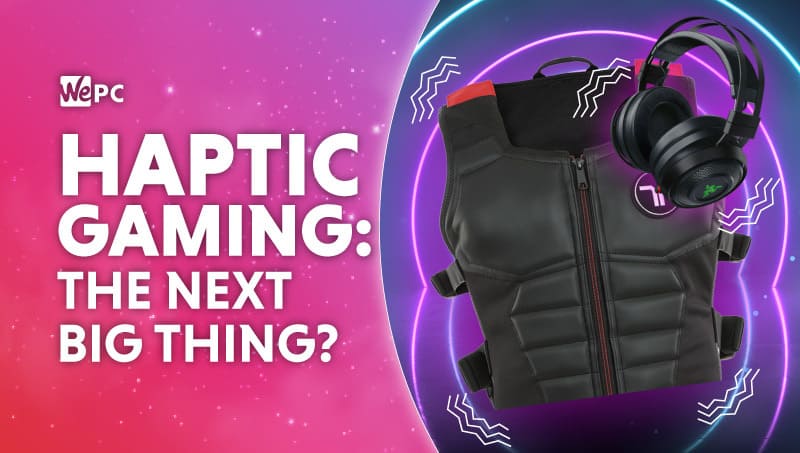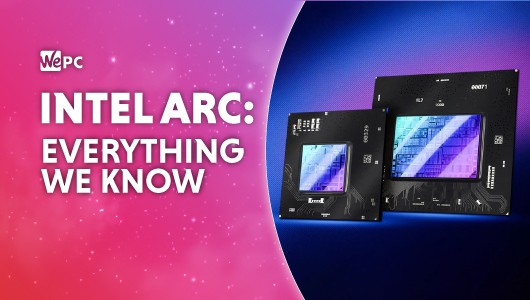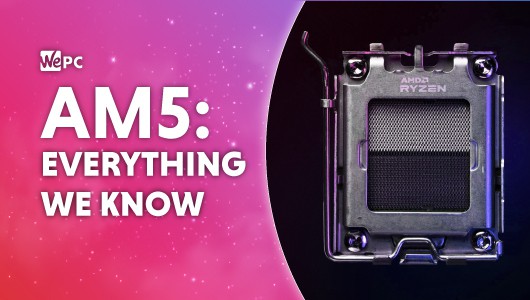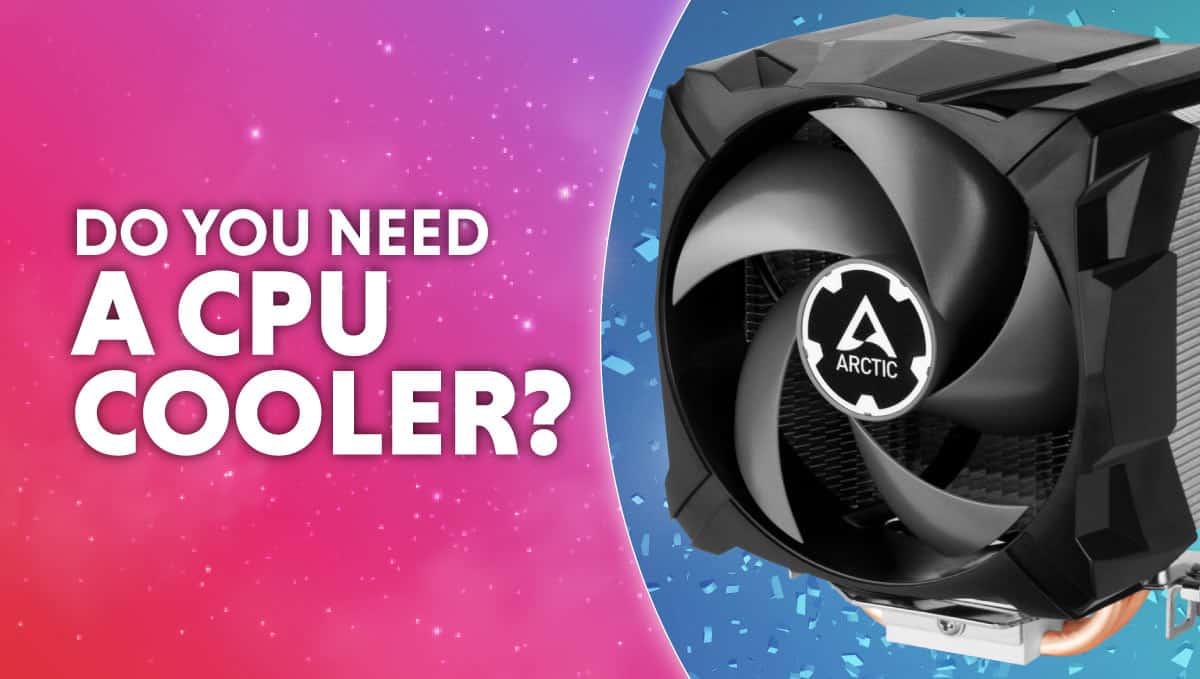Ben's interest in video games started as a result of his intense need to be better than his sister at something. It didn't work but it started a lifelong passion in gaming, which then evolved when he built his first PC. He completely botched it but it was fun and he hasn't stopped since. He's currently fighting an embittered battle to get even slightly competitive at Apex Legends. He has a particular interest in peripherals and loves messing around with his setup.
WePC is reader-supported. When you buy through links on our site, we may earn an affiliate commission. Learn more
Last Updated:
If like us, you’ve been keeping a keen eye out on the recent boom of haptic feedback gaming peripherals, like the Razer Enki Hyerpsense, Cooler Master Motion 1, and Razer Kraken V3 Pro, you might be wondering what will come next. Additionally, you might be wondering whether haptic feedback will become the next big thing for gaming. We’ve been wondering the very same, seeing as VR has experienced a huge drop in price over the last few years, with a corresponding rise in accessibility, perhaps haptics will follow a similar trajectory. Haptics has been popping up in a few unexpected areas, let’s take a look at some of them and see what we can infer.
What is haptic feedback?
haptic feedback refers to the use of touch to communicate, as opposed to the traditional aspects of gaming, film, and TV, which only utilize the audience’s sense of sight and hearing. haptic feedback is particularly well-suited to gaming as videogames already required physical input for control. If the gamer has a physical influence on the game, why shouldn’t the reverse happen too? most people are familiar with gaming haptics because of vibrating controllers, though force-feedback racing wheels have been around almost as long. So haptics has been an established gaming technology for a while, but what else might we have to look forward to?
The origin of gaming haptics
Though not strictly speaking inarguable, there’s a consensus that haptic gaming began with the introduction of the ‘Rumble Pak’ for the N64 in 1997. This rudimentary accessory fits into the controller’s memory slot and, in supported games, produced a vibration when firing a weapon or taking damage.
This parochial technology required an additional 2x AA batteries to power the motor, despite this, it was well-received as a fun addition to the console. In the years since, vibrating controllers have become standard, additionally popularized by the DualShock line of controllers that continue to accompany PlayStation consoles. It’s hard to believe that we didn’t always have vibrating controllers as they are so ubiquitous these days.
Haptic feedback triggers
This was taken to the next level in 2020 with the release of the DualSense controller, which, in addition to more defined vibrations, introduced a new technology, haptic triggers. These can vary the amount of force needed to press the triggers, courtesy of the smart implementation of voice-coil actuators. The variable resistance triggers have been well-received, as with previous iterations of PlayStation controllers, a game was released to exhibit the new features, in this case, Astro’s Playroom, which was ver well-liked, unusual for a pack-in game.
Despite the positive reception to the haptic triggers, they aren’t always utilized, for example, many people were disappointed by the lack of use in the recent smash-hit, Elden Ring. Of course, haptics aren’t just limited to the player’s hands, to truly enhance the gaming experience, the entire body’s capacity for touch must be taken advantage of.
Haptic gloves
So first we had vibrating controllers, now we have variable resistance triggers, it would seem that the next leap to make is to integrate haptics away from the input system and directly to the hand instead. Unfortunately, or unfortunately, we are a while away from Cyberpunk 2077-style cybernetic enhancements, but a haptic glove? that’s not too far-fetched.
It’s no wonder that haptic gloves are on the horizon, given that there are a total of 17,000 touch receptors and free nerve endings in the palm, not to mention the incredible amount of sensitivity in the fingertips as well. This means that a well-developed haptic glove might be one of the most effective ways to increase immersion. over the years, various attempts to capitalize on this sensitivity have been made, starting with the frankly hilarious Nintendo Power Glove. If you haven’t seen the incredible advert, you’re missing out. Though a failure both commercially and critically, it has proved hugely influential to haptic gaming and VR, after all, every technology needs a jumping-off point right?
Haptic suit
The logical next step in the advancement of haptic gaming technology is a full-body suit. These have been around for a few years, but are usually limited to laser-quest-esque vibrating pads, and have remained far too expensive for mainstream adoption. The concept of a haptic suit was brought to the attention of the general public thanks in no small part to the release of Steven Spielberg’s Ready Player One, based on the book of the same name by Ernest Cline.
This movie portrayed a futuristic dystopia, wherein people escape to a virtual world to get away from the dire reality they live in, this is accomplished with a combination of a VR Headset and a full-body haptic suit. The book’s original release date of 2011 preceded the arrival of the Oculus Rift by one year, showing the confidence in VR and haptics, even back then.
In 2016 we saw the unveiling of the Synesthesia Suit, a totally wild-looking haptic suit covered in vibrating pucks, which all work differently depending on where on the body they are placed. It is probably the most effective implementation of a haptic suit outside of fiction that we’ve seen thus far.
Haptic headsets
Recently, we’ve enjoyed testing the Razer Kraken V3 Pro, and the Razer Kaira Pro for PS5, both of which benefit from some of the most impressive haptics we’ve seen so far. particularly as they utilize an essentially inaudible section of the frequency range, transforming mostly wasted sound, into effective physical feedback.
Haptic feedback conclusion: there is a lot of potential for gaming here
As you might have noticed, here at WePC we are particularly interested in what could come next for haptic gaming. It is still a burgeoning technology that has a lot of potential, and we are only just at the beginning. We can only hope that we are soon to be walking around in Iron Man suits with physical feedback, 1:1 movement matching, and some incredible games to go with them.




